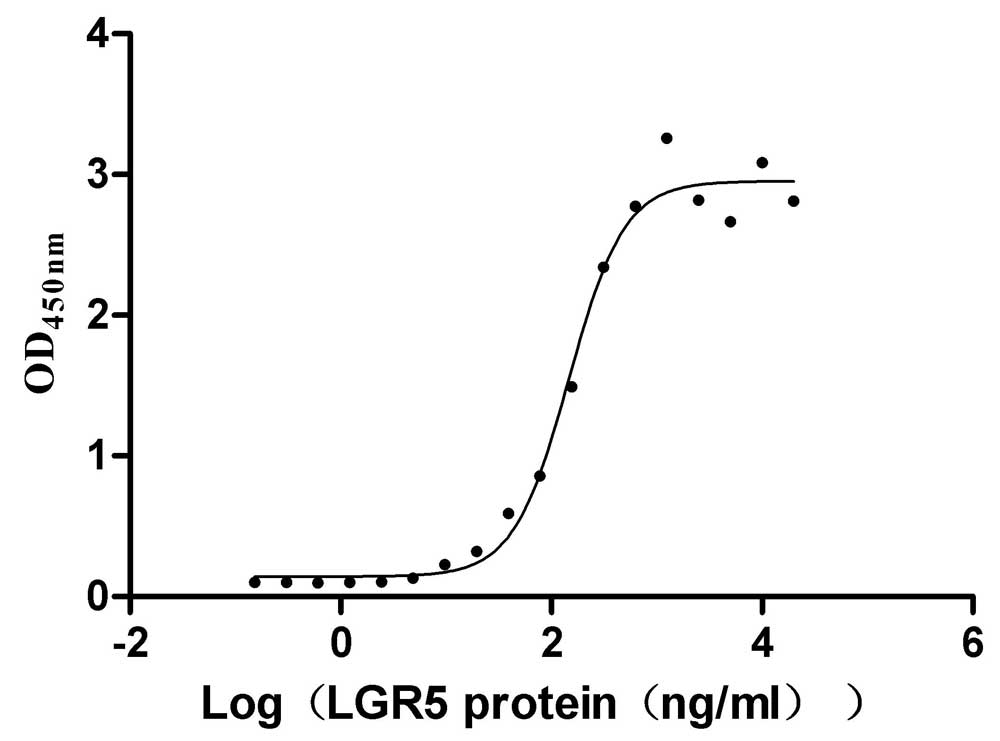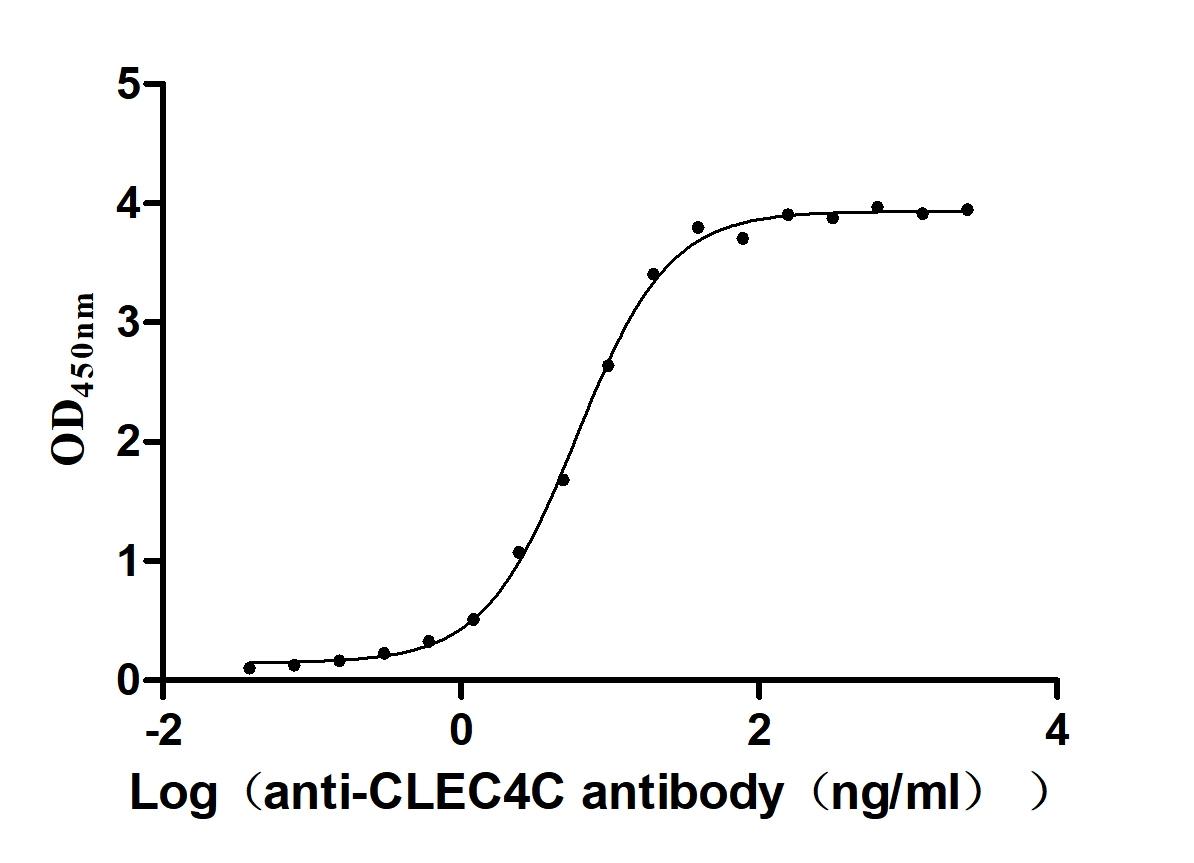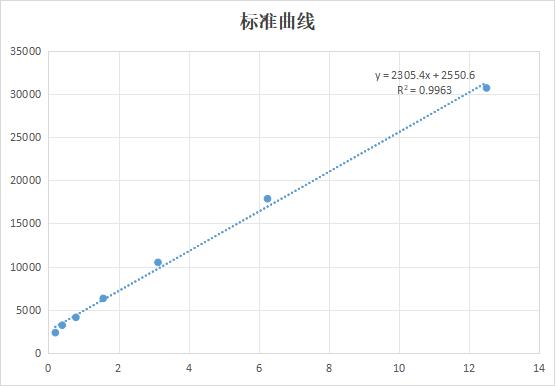Recombinant Human DNA cross-link repair 1A protein (DCLRE1A), partial
-
中文名稱:Recombinant Human DNA cross-link repair 1A protein(DCLRE1A) ,partial
-
貨號:CSB-YP761360HU
-
規(guī)格:
-
來源:Yeast
-
其他:
-
中文名稱:Recombinant Human DNA cross-link repair 1A protein(DCLRE1A) ,partial
-
貨號:CSB-EP761360HU-B
-
規(guī)格:
-
來源:E.coli
-
共軛:Avi-tag Biotinylated
E. coli biotin ligase (BirA) is highly specific in covalently attaching biotin to the 15 amino acid AviTag peptide. This recombinant protein was biotinylated in vivo by AviTag-BirA technology, which method is BriA catalyzes amide linkage between the biotin and the specific lysine of the AviTag.
-
其他:
-
中文名稱:Recombinant Human DNA cross-link repair 1A protein(DCLRE1A) ,partial
-
貨號:CSB-BP761360HU
-
規(guī)格:
-
來源:Baculovirus
-
其他:
-
中文名稱:Recombinant Human DNA cross-link repair 1A protein(DCLRE1A) ,partial
-
貨號:CSB-MP761360HU
-
規(guī)格:
-
來源:Mammalian cell
-
其他:
產(chǎn)品詳情
-
純度:>85% (SDS-PAGE)
-
基因名:DCLRE1A
-
Uniprot No.:
-
別名:Dclre1a; DCR1A_HUMAN; DNA cross link repair 1A; DNA cross link repair gene SNM1; DNA cross-link repair 1A protein; hSNM1; hSNM1A; PSO2; SNM1 homolog A
-
種屬:Homo sapiens (Human)
-
蛋白長度:Partial
-
蛋白標(biāo)簽:Tag?type?will?be?determined?during?the?manufacturing?process.
The tag type will be determined during production process. If you have specified tag type, please tell us and we will develop the specified tag preferentially. -
產(chǎn)品提供形式:Lyophilized powder
Note: We will preferentially ship the format that we have in stock, however, if you have any special requirement for the format, please remark your requirement when placing the order, we will prepare according to your demand. -
復(fù)溶:We recommend that this vial be briefly centrifuged prior to opening to bring the contents to the bottom. Please reconstitute protein in deionized sterile water to a concentration of 0.1-1.0 mg/mL.We recommend to add 5-50% of glycerol (final concentration) and aliquot for long-term storage at -20℃/-80℃. Our default final concentration of glycerol is 50%. Customers could use it as reference.
-
儲存條件:Store at -20°C/-80°C upon receipt, aliquoting is necessary for mutiple use. Avoid repeated freeze-thaw cycles.
-
保質(zhì)期:The shelf life is related to many factors, storage state, buffer ingredients, storage temperature and the stability of the protein itself.
Generally, the shelf life of liquid form is 6 months at -20°C/-80°C. The shelf life of lyophilized form is 12 months at -20°C/-80°C. -
貨期:Delivery time may differ from different purchasing way or location, please kindly consult your local distributors for specific delivery time.Note: All of our proteins are default shipped with normal blue ice packs, if you request to ship with dry ice, please communicate with us in advance and extra fees will be charged.
-
注意事項(xiàng):Repeated freezing and thawing is not recommended. Store working aliquots at 4°C for up to one week.
-
Datasheet :Please contact us to get it.
相關(guān)產(chǎn)品
靶點(diǎn)詳情
-
功能:May be required for DNA interstrand cross-link repair. Also required for checkpoint mediated cell cycle arrest in early prophase in response to mitotic spindle poisons. Possesses beta-lactamase activity, catalyzing the hydrolysis of penicillin G and nitrocefin. Exhibits no activity towards other beta-lactam antibiotic classes including cephalosporins (cefotaxime) and carbapenems (imipenem).
-
基因功能參考文獻(xiàn):
- Strikingly, the addition of the single-stranded DNA (ssDNA)-binding replication protein A (RPA) selectively restores XPF-ERCC1 endonuclease activity on this structure. The 5'-3' exonuclease SNM1A can load from the XPF-ERCC1-RPA-induced incisions and digest past the crosslink to quantitatively complete the unhooking reaction. PMID: 28607004
- Different charge distributions along the DNA binding groove may account for the drastic difference in processivity and DNA digestion efficiency, including that of damaged substrates, between SNM1A and SNM1B. PMID: 26582912
- differences in the substrate selectivities of SNM1A and SNM1B are likely to be relevant to their in vivo roles PMID: 22692201
- collaboration between hSNM1A and XPF-ERCC1 is necessary to initiate interstrand cross-link repair in replicating human cells PMID: 21896658
- RAD18-dependent recruitment of SNM1A to DNA repair complexes by a ubiquitin-binding zinc finger PMID: 20385554
- Results suggest that 53BP1 and Snm1 may cooperate in the cellular response to genotoxic damage. PMID: 12446782
- Snm1 and 53BP1 are components of a mitotic stress checkpoint that negatively targets the APC prior to chromosome condensation PMID: 15542852
- The SNM1 enzyme utilizes either DNA or RNA substrates, requires a 5'-phosphate moiety, shows very little activity on double-strand substrates, and functions at a size consistent with a monomer. PMID: 17804464
- Human SNM1A suppresses the DNA repair defects of yeast pso2 mutants. PMID: 18006388
- hSNM1 appears to represent a second pathway for genome stability PMID: 18180189
- These findings suggest that SNM1A acts with ATM to promote the G1 cell cycle checkpoint. PMID: 18848520
顯示更多
收起更多
-
亞細(xì)胞定位:Nucleus. Note=In some cells it may be found in typically 1 or 2 discrete nuclear aggregates of unknown function which also contain TP53BP1. Also found in multiple discrete nuclear foci which increase in number following treatment with ionizing radiation or interstrand cross-linking agents. These foci overlap with those formed by the MRN complex (composed of MRE11, RAD50 and NBN) and BRCA1.
-
蛋白家族:DNA repair metallo-beta-lactamase (DRMBL) family
-
組織特異性:Expressed in brain, heart, kidney, liver, pancreas, placenta and skeletal muscle.
-
數(shù)據(jù)庫鏈接:
Most popular with customers
-
Recombinant Human R-spondin-1 (RSPO1), partial (Active)
Express system: Mammalian cell
Species: Homo sapiens (Human)
-
Recombinant Human C-type lectin domain family 4 member C (CLEC4C), partial (Active)
Express system: Mammalian cell
Species: Homo sapiens (Human)
-
Recombinant Human Carcinoembryonic antigen-related cell adhesion molecule 8(CEACAM8) (Active)
Express system: Mammalian cell
Species: Homo sapiens (Human)
-
Recombinant Macaca fascicularis C-type lectin domain family 4 member C(CLEC4C), partial (Active)
Express system: Mammalian cell
Species: Macaca fascicularis (Crab-eating macaque) (Cynomolgus monkey)
-
Express system: Mammalian cell
Species: Macaca mulatta (Rhesus macaque)
-
Recombinant Human Urokinase-type plasminogen activator(PLAU) (Active)
Express system: Mammalian cell
Species: Homo sapiens (Human)
-
Recombinant Human Tumor necrosis factor ligand superfamily member 15(TNFSF15) (Active)
Express system: Mammalian cell
Species: Homo sapiens (Human)








-AC1.jpg)









